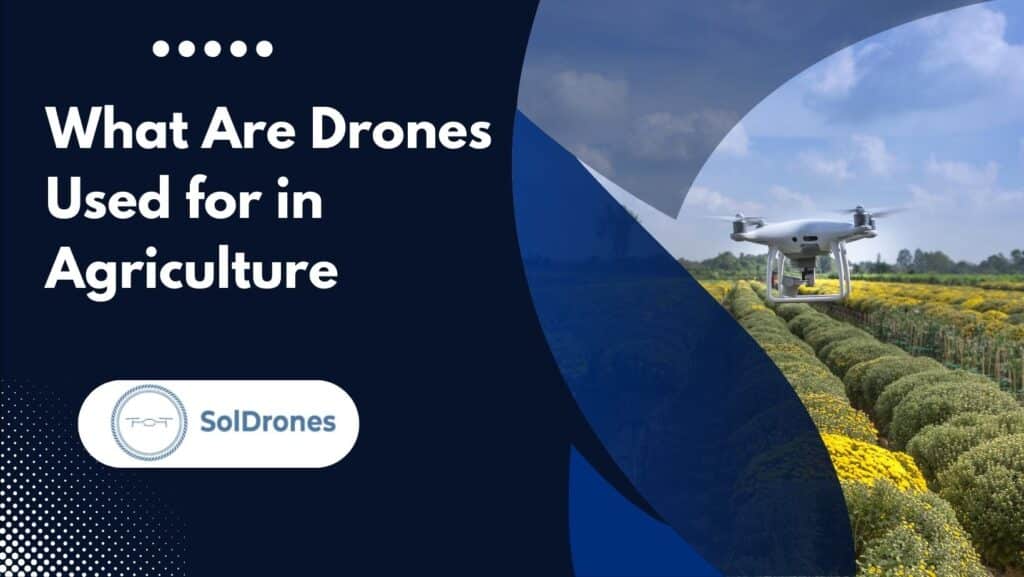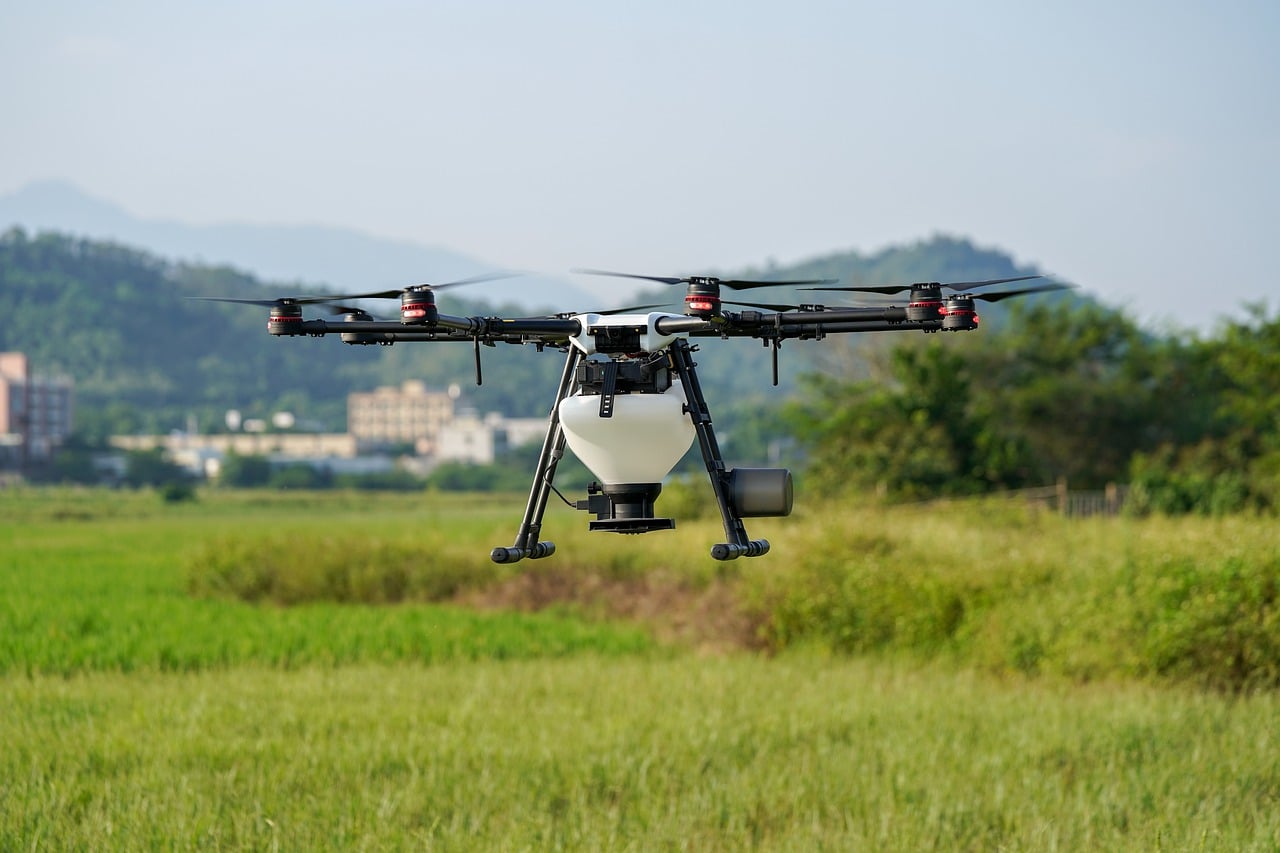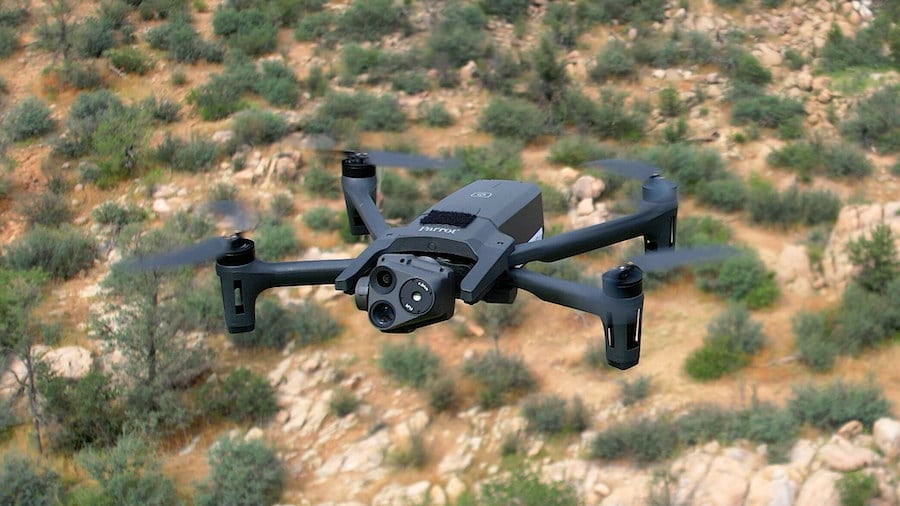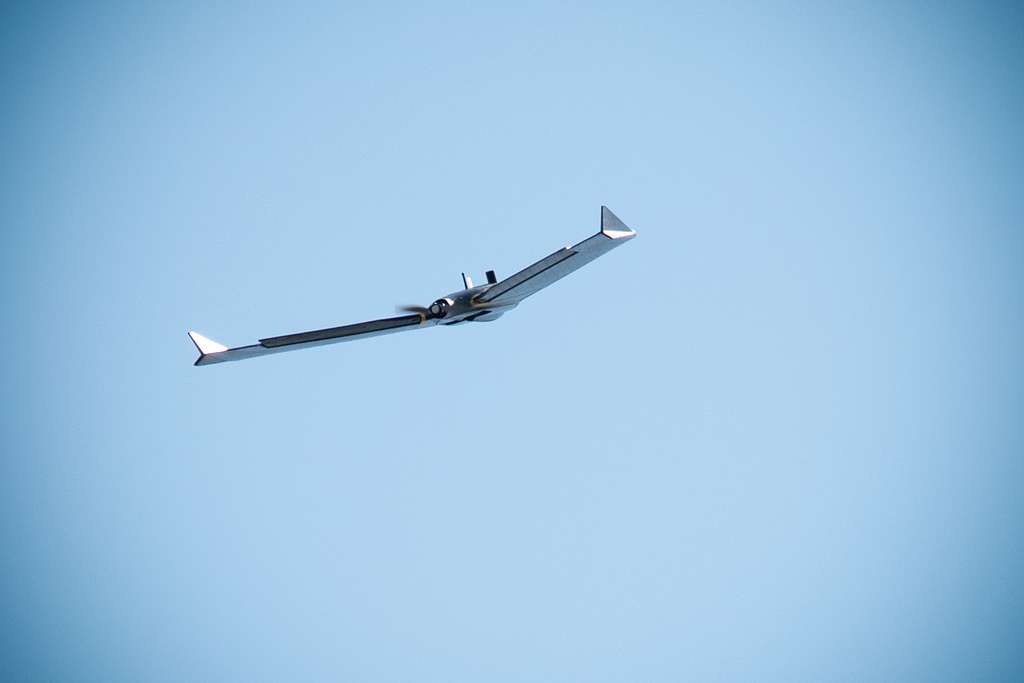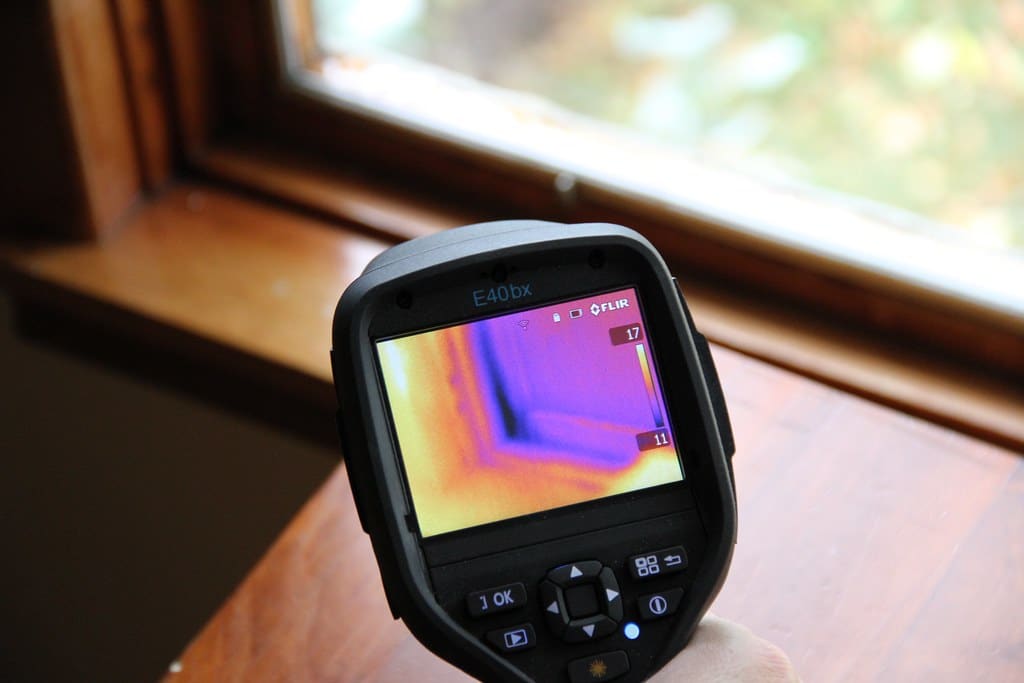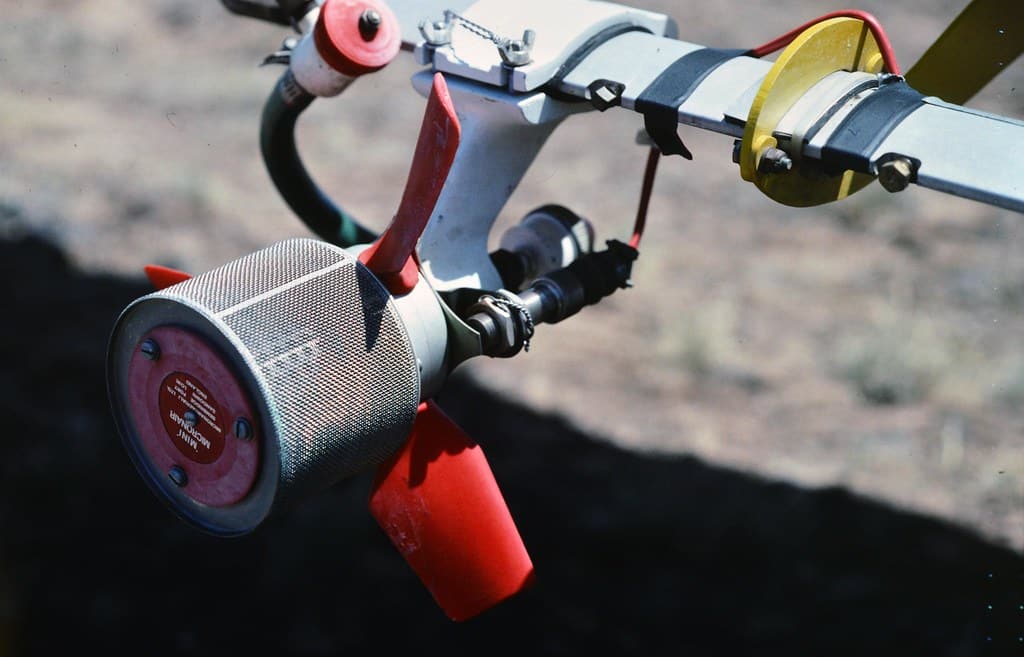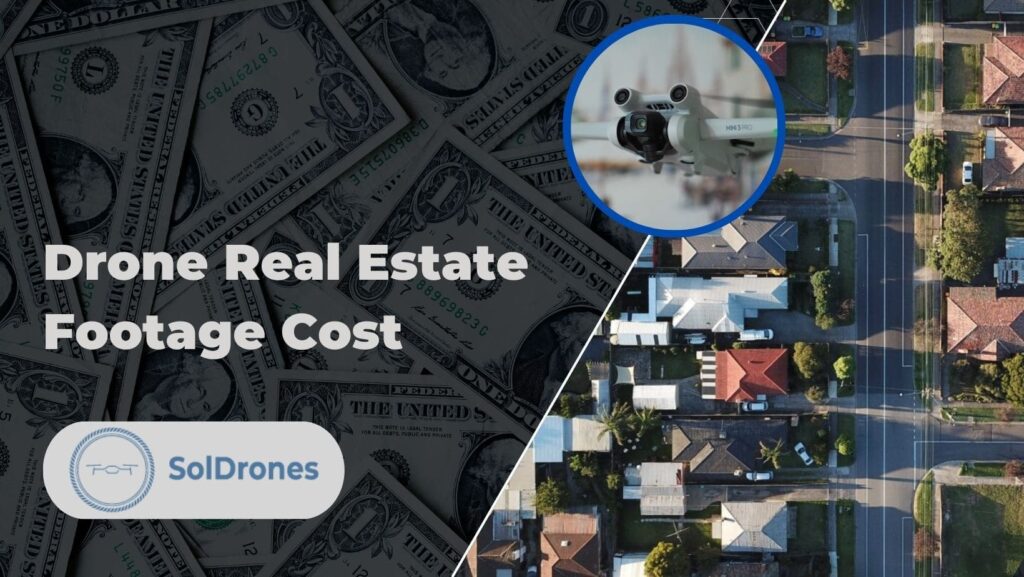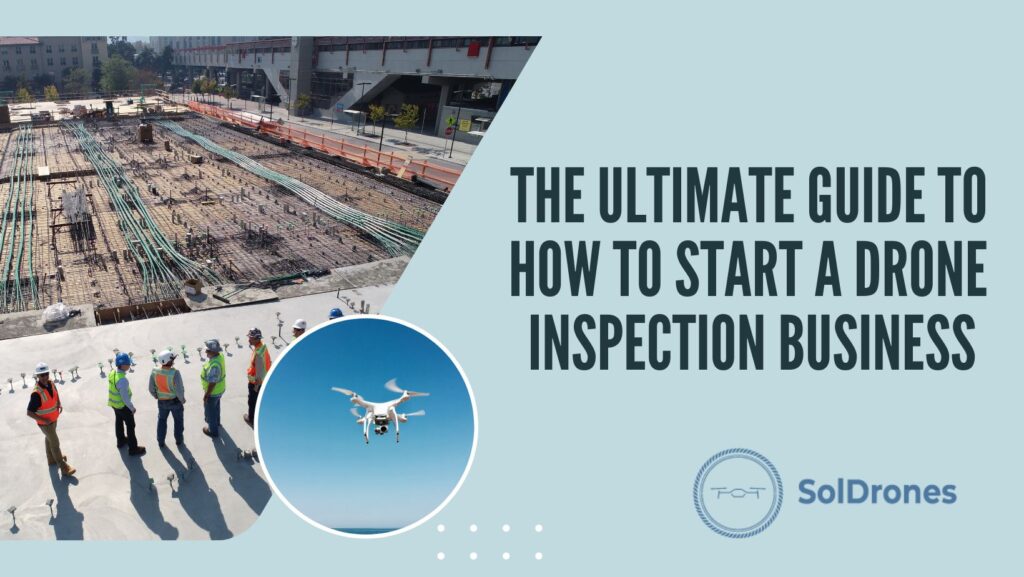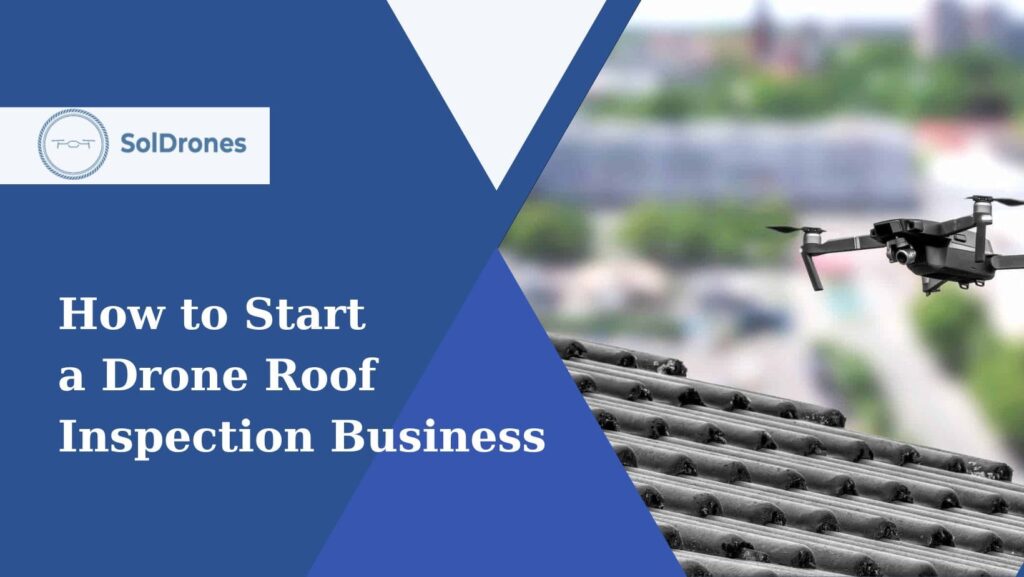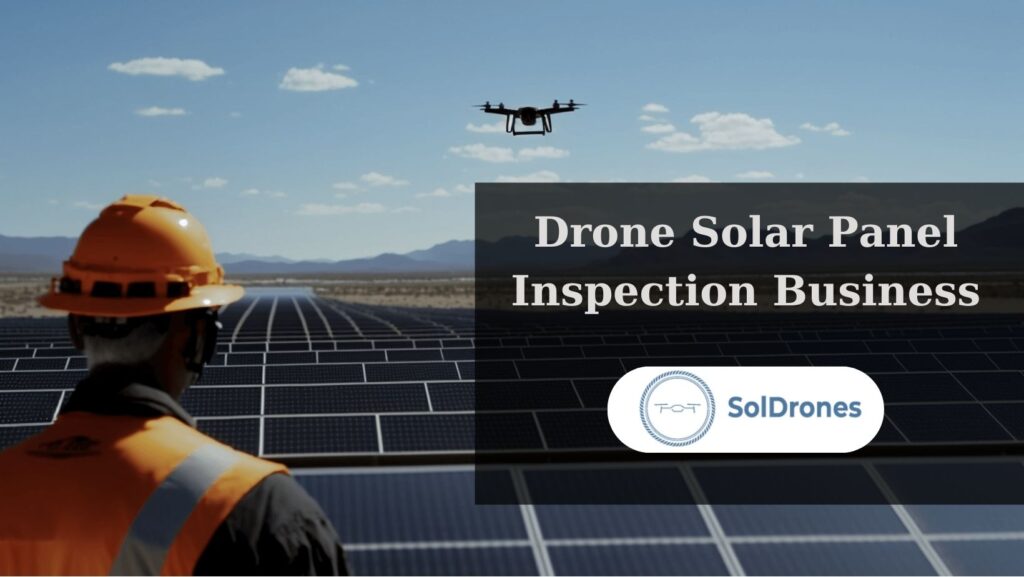Other than simple hobbyist photography ventures, drones have found a remarkable place in the agriculture industry, revolutionizing how farmers manage their fields and crops.
This comprehensive guide will explore how drones are used in agriculture, from precision farming to crop monitoring, and how they significantly enhance productivity and sustainability.
With their ability to cover vast areas quickly and gather detailed data, drones offer a bird’s-eye view that was previously unattainable or highly expensive.
We’ll cover how these aerial assistants transform agricultural practices, making them more efficient, cost-effective, and environmentally friendly.
Let’s uncover the innovative applications of drones in agriculture, demonstrating their critical role in feeding the world’s growing population.
Article Highlights:
- Drones transform farming with precision monitoring and targeted spraying, enhancing efficiency and sustainability.
- Drones offer unprecedented insights into crop and soil health through advanced imaging and analysis, driving proactive agricultural practices.
- Drones lead the way in sustainable agriculture, optimizing resource use, minimizing environmental impact, and securing a food-rich future.
Drones are becoming invaluable in modern agriculture, transforming how farmers manage their crops and livestock.
How Are Drones Used in Agriculture?
Drones are becoming invaluable in modern agriculture, transforming how farmers manage their crops and livestock.
Source: National Geographic
Here’s a breakdown of the primary ways drones are used in agriculture:
Crop Monitoring and Analysis
- High-resolution imaging: Drones equipped with multispectral or hyperspectral cameras capture detailed images of fields, revealing crop health, stress factors, and potential issues invisible to the naked eye.
- Normalized Difference Vegetation Index (NDVI): This analysis method uses special sensors to measure plant health and vigor, allowing farmers to target interventions like fertilizer or irrigation only where needed.
- Pest and disease detection: Early detection of pests and diseases can save farmers significant losses. Drones facilitate targeted treatment rather than blanket spraying of entire fields.
- Yield estimation: Data collected by drones can provide crop yield estimates, allowing farmers to make more informed decisions about harvesting and marketing.
Precision Spraying and Fertilizing
- Targeted application: Drones equipped with sprayers can precisely apply pesticides, herbicides, and fertilizers directly to affected areas, reducing input costs and environmental impact.
- Variable-rate application: Combined with data analysis, drones can adapt the amount of product dispensed based on crop needs, optimizing resource use.
- Difficult terrain: Drones are especially useful in areas with challenging terrain or where it may be impractical to use traditional machinery.
Livestock Tracking and Management
- Monitoring herd health and location: Drones fitted with thermal cameras can locate livestock, monitor their health, and aid in counting, even over extensive grazing areas.
- Fence inspection: Drones can quickly and efficiently inspect fences for damage, saving time and preventing livestock from escaping.
- Identifying stray or injured animals: Quickly locate lost or those needing assistance.
Other Applications
- Soil and field analysis: Drones with specialized sensors can provide data on soil composition, moisture levels, and drainage patterns, helping optimize irrigation and planting decisions.
- Pollination: Emerging technology suggests the potential for drones to assist with pollination, especially in controlled environments like greenhouses.
- 3D mapping: Drones can create accurate 3D models of fields, supporting irrigation planning, drainage design, and land management.
What are the Benefits of Drone Technology in Agriculture?
The integration of drone technology into agriculture brings a multitude of benefits that are transforming the industry. Here are some key advantages:
- Precision Agriculture: Drones enable precision agriculture practices by providing detailed aerial imagery. This allows farmers to see their fields in new ways, identifying issues like nutrient deficiencies, water stress, and pest infestations with pinpoint accuracy. By addressing these issues precisely, farmers can improve crop yields while minimizing waste and reducing the amount of chemicals used.
- Efficient Monitoring and Mapping: With drones, monitoring, and mapping large tracts of farmland become more efficient and less time-consuming. Drones can cover vast areas quickly, providing real-time data that helps make informed decisions. This capability is crucial for managing crops more effectively and can lead to better land management practices.
- Cost Reduction: Utilizing drones reduces the need for traditional, labor-intensive farm management methods. This not only cuts down on labor costs but also decreases the need for heavy machinery, which can be expensive to operate and maintain. By reducing these costs, drones help to increase overall profitability for farmers.
- Improved Water Management: Drones equipped with thermal or multispectral sensors can identify areas of a field that are either too dry or too wet. This information helps in optimizing irrigation systems, ensuring that water is used efficiently across the farm. Better water management conserves resources and can lead to more sustainable farming practices.
- Enhanced Crop Health and Yield: By providing detailed insights into crop health and soil conditions, drones help farmers take proactive measures to protect their yields. Early detection of potential issues allows for timely interventions, reducing crop damage and potentially increasing overall yields.
- Environmental Benefits: Drones contribute to more environmentally friendly farming practices. Precision application of water, fertilizers, and pesticides reduces the environmental footprint of farming operations. Additionally, the detailed data collected by drones can help in monitoring and improving soil health, promoting sustainable agriculture practices.
- Data Collection and Analysis: The ability to collect and analyze vast amounts of data is one of the most significant benefits of drone technology in agriculture. This data can be used for a wide range of applications, from tracking crop growth and health over time to optimizing farm operations and planning for future planting seasons.
Overall, drone technology in agriculture can increase efficiency, reduce costs, and promote sustainable practices.
This technology will likely become even more integral to modern farming operations as it evolves.
The Best Agriculture Drones and Payloads
Selecting the best agriculture drone and payloads depends on the specific needs and objectives of the farming operation, such as crop monitoring, mapping, spraying, or soil and field analysis.
However, some drones have risen above the rest in terms of performance, versatility, and the data quality they provide.
Here’s an overview of some of the top agriculture drones and their payloads that are widely recognized for their capabilities in the agricultural sector:
Top Drones for Agriculture
1. DJI Agras Series: The DJI Agras series, like the Agras T30, is specifically designed for precision agriculture, particularly for spraying. These drones can carry heavy payloads of liquid for pesticide and fertilizer application over large areas. Their advanced flight planning software and precision spraying system make them ideal for large-scale farming operations.
2. DJI Phantom 4 Multispectral: This drone is tailored for crop monitoring and health assessment. Equipped with a multispectral camera, it captures data across different wavelengths, providing valuable insights into crop health, vegetation indices, and more. It’s a great tool for precision agriculture, allowing for targeted interventions.
3. Parrot ANAFI USA: Designed for detailed imaging and reconnaissance, Parrot ANAFI USA offers high-resolution cameras and thermal imaging capabilities. It’s versatile for crop monitoring and farm infrastructure inspection, providing detailed satellite imagery for analysis.
4. SenseFly eBee X: Known for its mapping and surveying capabilities, the eBee X can cover up to 500 hectares in a single flight. It’s highly customizable with various payload options, including multispectral and thermal cameras, making it suitable for various agricultural applications.
Payloads for Agriculture Drones
- Multispectral Cameras: These cameras capture data from various parts of the light spectrum, including wavelengths invisible to the human eye. They are crucial for assessing plant health, water stress, and nutrient content. Examples include the MicaSense RedEdge and the Parrot Sequoia+.
- Thermal Cameras: Thermal drone imaging payloads can detect temperature variations in crops and soil, useful for identifying areas of stress, irrigation needs, and pest control. The FLIR Vue Pro is a popular choice for agricultural industry drones.
- LiDAR Sensors: Light Detection and Ranging (LiDAR) sensors are used for creating high-resolution maps and 3D models of the terrain. They are particularly useful for analyzing soil erosion, planning drainage systems, and surveying land for new crop planting.
- Hyperspectral Cameras: While similar to multispectral cameras, hyperspectral cameras capture a broader light spectrum, offering more detailed information about crop health, disease detection, and stress levels.
- Spraying Systems: Drones like the DJI Agras series come equipped with precision spraying systems, allowing for targeted application of pesticides, herbicides, and fertilizers. These systems help in reducing waste and increasing efficiency in crop management.
When choosing an agriculture drone and its payloads, consider the specific needs of your operation, including the size of the area to be covered, the type of crops grown, and the primary goals of using drone technology, whether for mapping, spraying, or crop monitoring.
Each drone and payload offers unique advantages, and the best choice will depend on balancing those benefits with the farm’s requirements and budget.
What Is the Future of Drones in Agriculture?
The future of drones in agriculture is incredibly bright. We can expect advancements in the following key areas that will revolutionize the drone industry:
Expansion and Democratization
- Increased adoption: Drones will become even more commonplace on farms of all sizes. This is driven by reduced costs, improving ease of use, and greater understanding of their benefits.
- Global reach: Drone use will expand rapidly into developing economies, boosting productivity and addressing food security challenges.
- Data-driven farming: Drones will be integral to the broader shift towards data-centric agriculture, where real-time data guides decision-making for maximum efficiency and sustainability.
Enhanced Capabilities
- Advanced Autonomy: Drones will transition from semi-autonomous to fully autonomous operation, performing complex tasks with minimal human input, like large-scale, coordinated crop scouting and precision treatment.
- Swarm technology: Fleets of drones will work together to cover vast areas with incredible precision and speed, optimizing resource management and addressing large-scale challenges.
New Use Cases
- Precision planting and seeding: Drones equipped with precision seeding capabilities will optimize planting patterns and potentially reduce the need for heavy machinery.
- Pollination: While in early stages, drones could offer solutions for assisted pollination, particularly in protected environments such as greenhouses or when natural pollinators are scarce.
- Advanced livestock management: Beyond monitoring, drones could assist with tasks like herding, administering veterinary care, or detecting early signs of disease that are far more difficult for the human eye to notice.
Regulation and Public Perception
- Evolving regulations: Expect regulations to adapt as technology advances, balancing safety, privacy, and innovation.
- Positive perception: As success stories with agricultural drones become more widespread, public perception will shift towards acceptance and view them as essential tools for sustainable farming.
Challenges and Considerations
There will still be some hurdles to overcome for drones to reach their full potential:
- Battery technology: Improvements in battery life are needed for longer and more ambitious flight missions.
- Weather sensitivity: Adverse weather conditions like strong winds and heavy rain can still limit drone operations.
- Data handling: Managing and interpreting the vast amounts of data collected by drones will require advanced data management skills and infrastructure.
The Big Picture
The future of drones in agriculture is deeply intertwined with the future of agriculture itself. Drones will be essential tools as agriculture moves toward:
- Hyper-precision: maximizing efficiency and crop output on every square meter.
- Sustainability: Minimizing environmental impact and prioritizing responsible resource use.
- Resilience: Using data to predict and adapt to changing weather patterns and environmental stresses.
Final Thoughts
As we conclude this comprehensive guide on using drones in agriculture, it’s clear that these aerial technologies are not just futuristic gadgets but essential tools in the modern farmer’s arsenal. From precision farming systems and crop monitoring to efficient resource management and environmental conservation, drones offer many applications that significantly enhance agricultural productivity and sustainability. They enable farmers to make informed decisions, reduce operational costs, and ultimately contribute to a more sustainable and food-secure future.
The advancement in drone technology and the development of specialized payloads have opened new horizons for agricultural practices, making farming more efficient, less resource-intensive, and more aligned with precision agriculture principles. As the world’s population continues to grow, the innovative applications of drones in agriculture demonstrate their indispensable role in ensuring the resilience and sustainability of our global food systems. The future of farming lies in harnessing the power of these technologies, and it is a future that is already taking flight.
FAQs
How do drones impact the environment and sustainable farming practices?
Drones minimize the need for heavy machinery and reduce the use of water, fertilizers, and pesticides through targeted applications. This lowers the carbon footprint and promotes more sustainable farming practices.
What are the benefits of using drones for 3D mapping in agriculture?
3D mapping with drones helps in understanding the topography of farmland, which is essential for planning drainage and irrigation systems and optimizing land use. It provides a detailed terrain view, aiding in more precise farm management.
What types of cameras do agricultural drones use?
Agricultural drones typically use multispectral, thermal, and RGB cameras to capture a wide range of data. Each type of camera provides different insights, from basic visual imagery to detailed information on crop health and water stress.
Does flying a drone for agricultural purposes need a certificate from the FAA?
Yes, flying Unmanned Aerial Vehicles (UAV) for agricultural purposes in the United States does require certification from the Federal Aviation Administration (FAA). Any drone operation that falls under the commercial use category, which includes agricultural activities such as crop monitoring, mapping, and spraying, must adhere to the FAA’s regulations governing commercial drone operations.

